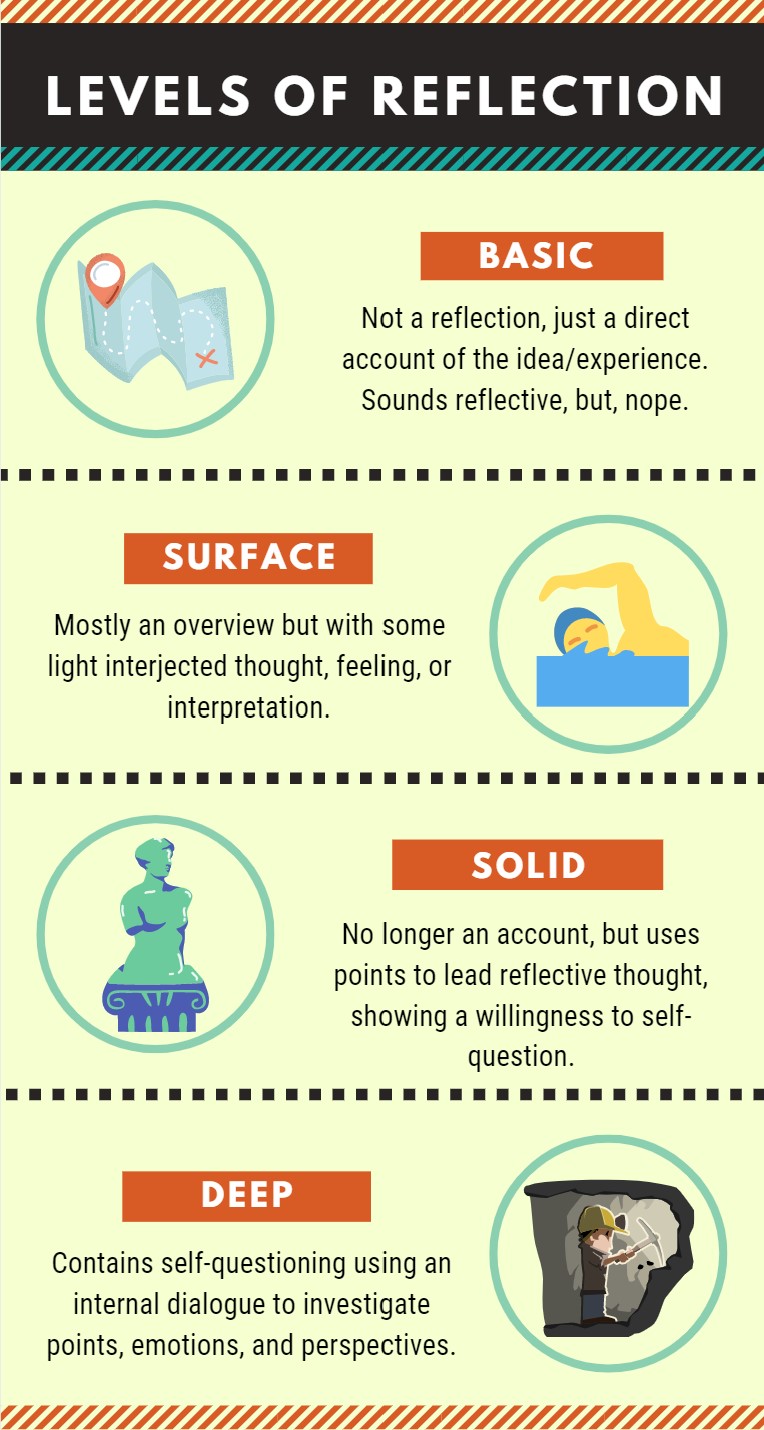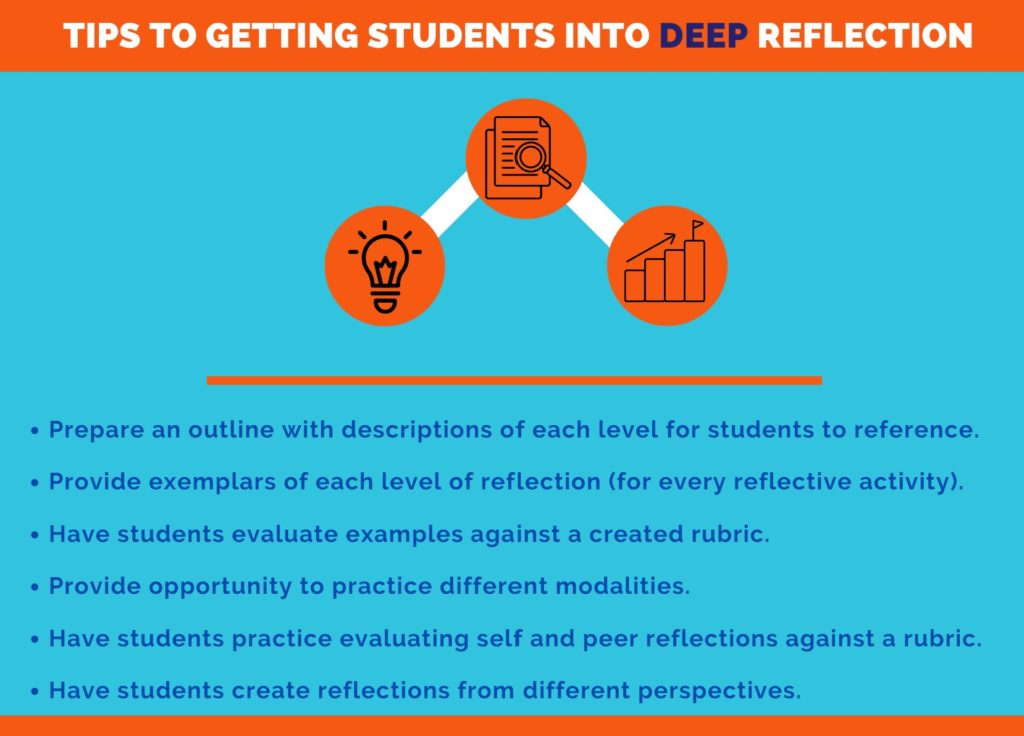9 The Hidden Key to Reflective Practice
Progressing Through Levels of Reflection
In our discussion about why reflection often fails, we addressed two key issues: students are often overconfident in their understanding and students find reflection mentally taxing. Many students may either not see the use, or find it too difficult, to produce anything more than a superficial reflection. Research into reflection has outlined levels of reflective depth. Defined differently by different researchers, I have summarized levels of reflection below.44

Of course, it will not be enough to just explain this briefly to students and get started. The research is clear that explicit, frequent, and direct instruction is necessary to guide students in this journey and see the pay-off of reflective practice in both SRL and academic performance. Below are some instructional tips to consider in facilitating deeper reflection.44

The Power of Feedback
Students will need direct instruction on the explicit differences between the levels of reflection, time to practice and improve the quality of their reflections, and feedback on their progress through these levels.47 Providing feedback on reflections is no different in its importance than the well-established need for feedback on assessment. While it often accompanies assessment, feedback is not the same as assessment. It is possible to assess student reflections for clarity or depth, including assigning a mark or grade, if it is an intended learning target, just as you would assess any instructional concept. Likewise, it is possible to provide feedback only to strengthen student reflections as a strategy to further explore other instructional concepts. Feedback in digital learning is one of the most powerful tools to increase student learning.49 As mentioned in The Power of Feedback50, all feedback (whether about the task, process, or self) must answer for students these questions: “Where am I going?” and “How am I doing?” and “Where too next?” (Notice these are also reflective prompts!)
Unfortunately, students may have a bias as to what feedback to accept or ignore, meaning they will need scaffolding and training in how to properly use any feedback to self-assess and improve reflections32,50—this is where instructive use of rubrics and exemplars come in. Rubric-guided feedback on previous reflections helps students to deepen reflection on the next attempt.47,48 There are, of course, different ways to provide feedback, and students show greater performance improvements and overall SRL process improvements with teacher-created video feedback over text feedback.51,52 THAT’S RIGHT, you can use different media too! In your feedback.
Instruction, conversations, rubrics, exemplars, and practice should produce stronger reflections and, through this work, stronger reflective practice should lead to a better understanding of content. Reflective practice can be the process or the outcome. It can be the assessment itself, or the method by which content understanding is assessed. Communicating the intent with the students is key.
Peer- and Self-Generated Feedback
Too often students leave the feedback to the responsibility of another person (historically the teacher, coach, parent), leaving an outside agent to decide their successes, failures, and next steps. This limits the potential of reflection in general, as so much of reflection as a life-long learner depends on the ability to self-assess. Students with weaker SRL skill rarely ask for feedback from peers (or teachers), while strong SRL students specifically ask for feedback from peers first, before adults.53 This is what makes the use of group-created reflections or paired “critical friend” reflective activities so potent.18 All the reflective activities mentioned can be adapted to include a peer component, and some modalities also lend themselves easily to peer-generated feedback – such as the embedded commenting, collaborating and responding functions of Flipgrid.
In addition, research has shown that self-regulated learners excel because they respond positively to any outside feedback and also generate internal feedback to improve their processes.53 The ability to monitor your work against the goal and reflect on your progress, is self-generated feedback. I’ll stress reflection is feedback. This self-generated feedback can be focused on the quality of the work (assessing against a standard), the quality of the process (assessing success of a strategy), or the quality of the effort (assessing motivation and behaviour). The strength of reflection as feedback is in its timeliness—no need to wait for an outside agent to have a look.
BOTTOM LINE
Reflections can be superficial or deep and students will need help identifying these levels of thought—research says that creating self-assessment opportunities from feedback is critical to developing deep reflective practice.
*Butler & Winne (1995), p. 246

